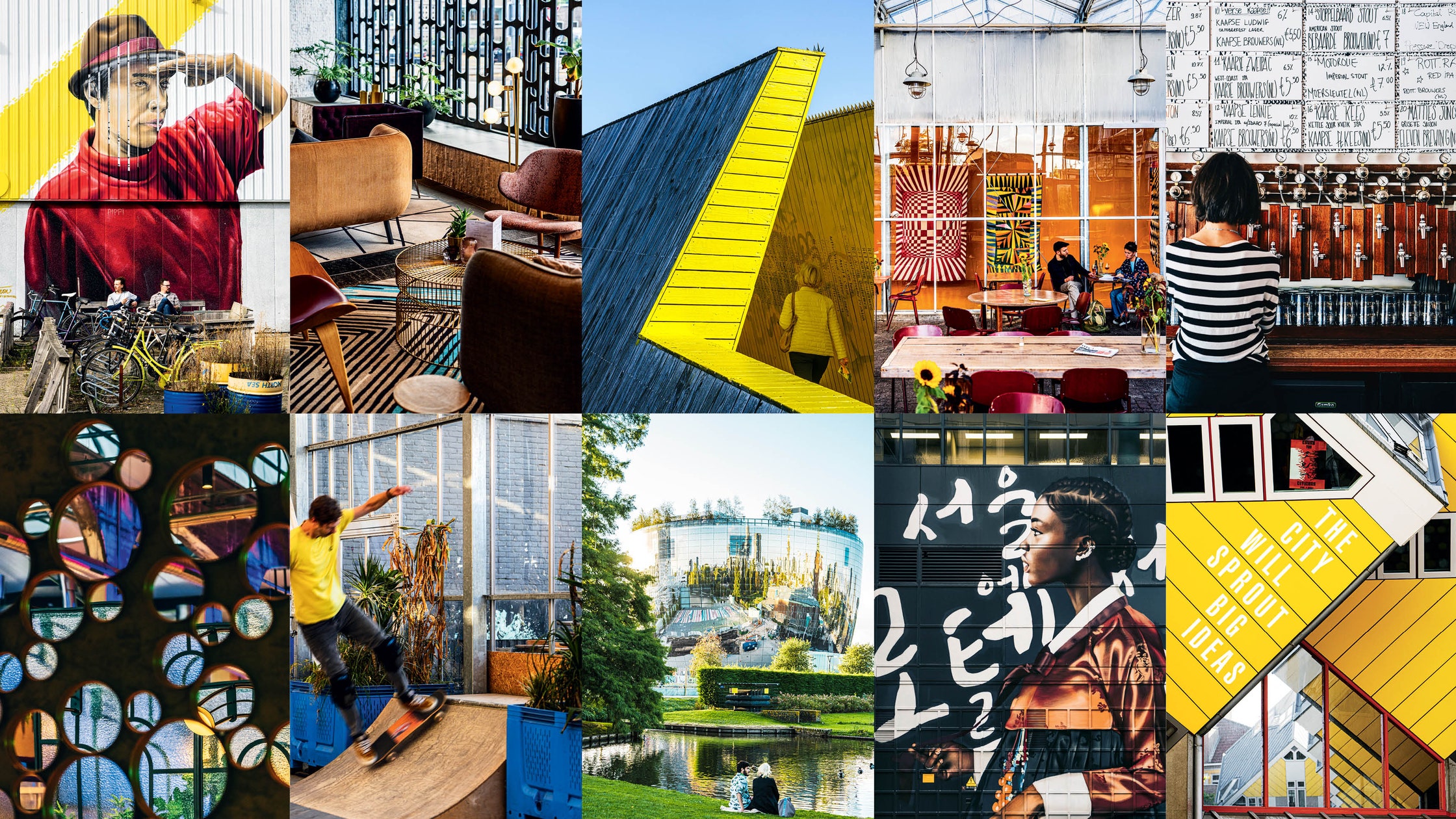Transforming Rotterdam: From Industrial Port to Urban Regeneration Hub
It’s one of those drizzly Dutch mornings in Rotterdam – the kind that, having lived here for a good bit of my adult life, I know well. Too cool for shorts, too warm for a winter jacket. I’m standing on tiptoe behind a block of grimy warehouses, staring straight into the eye of a giant skull. Chalky white, with a square jaw and a shallow nasal cavity, it juts straight up from the ground. But unlike most craniums, this one has a sauna that releases steam from its eye sockets – and in its neck, there’s a bath. Made from fibreglass and wood, and about the size of a Suburban, the skull is part of the artist-designer Joep van Lieshout’s sculpture park, located in the Merwe-Vierhavens district on the western fringe of the city.
Weelde’s skate park
Inside Stadshaven Brouwerij
Eccentricity Meets Urban Regeneration
Eccentric though it may be, the presence of Van Lieshout’s work here represents an impressive about-face for an area that still bears the pockmarks of a decrepit industry. Once home to one of the world’s largest fruit ports, Merwe-Vierhavens, or M4H, as the locals call it, hit a downturn in the ’90s, when the rise of refrigerated shipping containers made its cold-storage units redundant. It became a peripheral wasteland, checkered with port cranes and windy parking lots.
In the late 20th century, much of Rotterdam felt like M4H. Perhaps not in appearance, but certainly in the national psyche. While other Dutch cities like Amsterdam, Utrecht, and The Hague were bastions of the arts and cultural wealth, Rotterdam was often viewed as a no-frills workers’ city. “Up until 10 years ago, you could hardly score a proper bagel here,” Van Lieshout reflects. “Coffee was served strong and black.”
A Leader in Urban Sustainability
Today, Rotterdam has not only caught up to its Dutch counterparts but has also positioned itself as a leader in urban regeneration. This evolution can be traced back to 2007 when Rotterdam joined C40 Cities, a global network of metropolises tackling climate change through ambitious, measurable actions. These actions include constructing net-zero carbon buildings and increasing the number of “green” streets in the city. Such initiatives might involve a combination of pedestrian-friendly planning policies and the adoption of zero-emission buses.
Subsequently, Rotterdam reinforced its environmental commitment by signing its Climate Agreement in 2019, aiming to halve CO2 and greenhouse gas emissions by 2029. To achieve this goal, the city embraced innovation, investing in green spaces, promoting smart design, and – in the case of M4H – extracting value from previously neglected areas.
Building a Cultural Playground
The sculpture park in M4H is just one piece of Van Lieshout’s ambitious plans for a cultural playground. There’s also Brutus, a whole neighbourhood created with artists in mind. Van Lieshout shows me a scale model of three austere residential towers, designed to sit atop and alongside his current workshop. This project will feature affordable studios and an outdoor space with a theatre and open-air cinema. Already, Van Lieshout notes, the initiative is generating interest beyond Rotterdam, and his studio is developing related plans for other cities that are yet to be disclosed.




